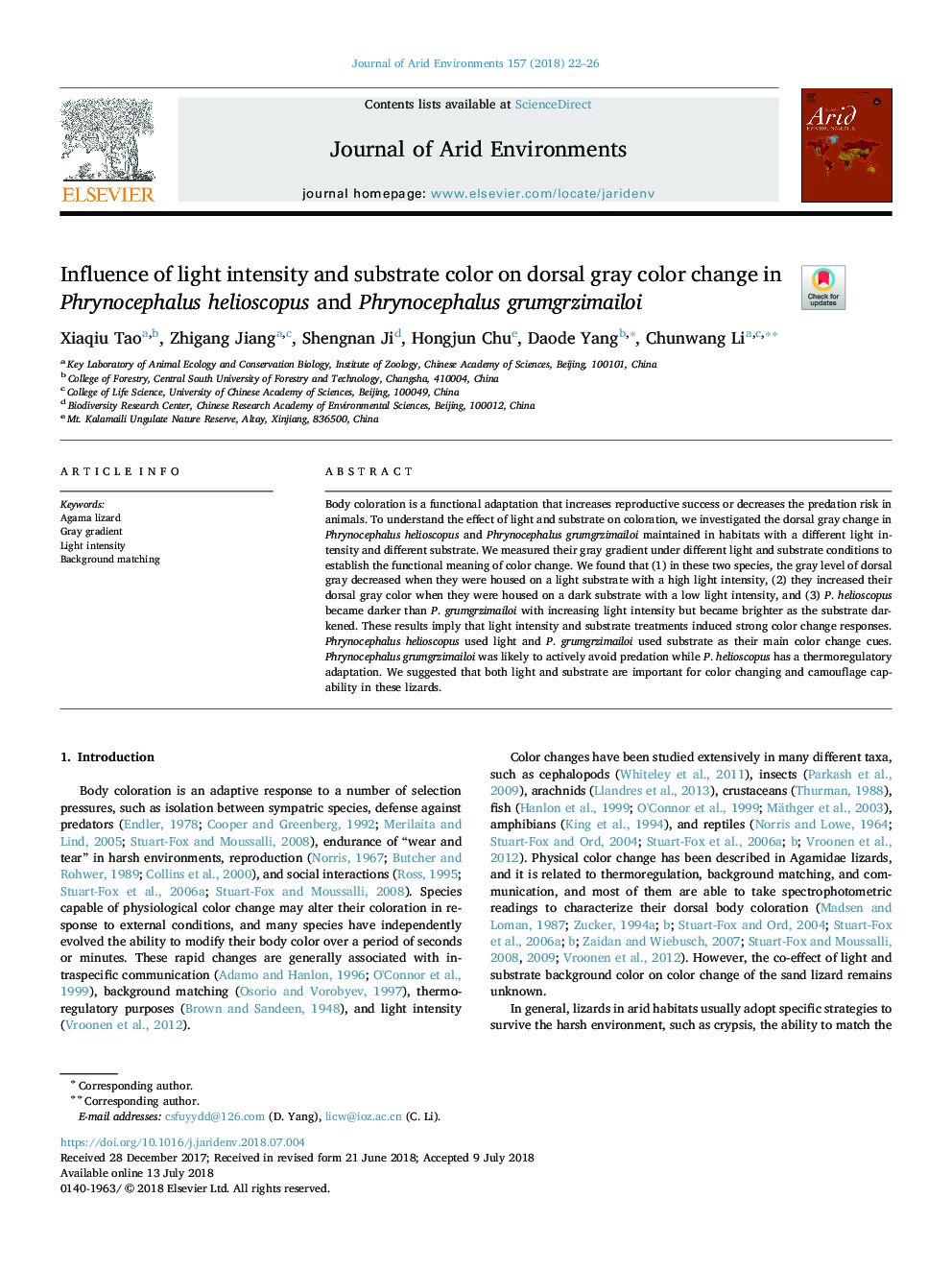| Article ID | Journal | Published Year | Pages | File Type |
|---|---|---|---|---|
| 8848431 | Journal of Arid Environments | 2018 | 5 Pages |
Abstract
Body coloration is a functional adaptation that increases reproductive success or decreases the predation risk in animals. To understand the effect of light and substrate on coloration, we investigated the dorsal gray change in Phrynocephalus helioscopus and Phrynocephalus grumgrzimailoi maintained in habitats with a different light intensity and different substrate. We measured their gray gradient under different light and substrate conditions to establish the functional meaning of color change. We found that (1) in these two species, the gray level of dorsal gray decreased when they were housed on a light substrate with a high light intensity, (2) they increased their dorsal gray color when they were housed on a dark substrate with a low light intensity, and (3) P. helioscopus became darker than P. grumgrzimailoi with increasing light intensity but became brighter as the substrate darkened. These results imply that light intensity and substrate treatments induced strong color change responses. Phrynocephalus helioscopus used light and P. grumgrzimailoi used substrate as their main color change cues. Phrynocephalus grumgrzimailoi was likely to actively avoid predation while P. helioscopus has a thermoregulatory adaptation. We suggested that both light and substrate are important for color changing and camouflage capability in these lizards.
Keywords
Related Topics
Physical Sciences and Engineering
Earth and Planetary Sciences
Earth-Surface Processes
Authors
Xiaqiu Tao, Zhigang Jiang, Shengnan Ji, Hongjun Chu, Daode Yang, Chunwang Li,
